Hello, Steemian! It's a pleasure and great privilege for me to be writing on this platform once again. Today I'll be talking on Superfluidity, taking liquid light as an exposition.
Introduction
Before I delve into the topic of discussion, why don't we take a little time to deviate and imagine the benefits and applications of a superconductor, a material that allows electricity or charges to flow easily through it with very little or no electrical resistance when cooled below a characteristic critical temperature. In such conductors lie many benefits, to say a few, some of which are in the production of powerful superconducting electromagnets that are used in magnetic levitating (maglev) trains and some other benefits too in nuclear reactors.

Now, let's talk about another material (a fluid) that has similar features to that of a superconductors, but rather than having zero electrical resistance, it's being replaced by having zero viscosity? Such a material is called a "Superfluid".
What is Superfluidity?
Superfluidity is the distinguishing feature of a fluid (liquid or gas), with zero or no viscosity which allows the fluid to flow without loss of kinetic energy.

The phenomenon of superfluidity is very similar to that of Superconductivity, except for the zero electrical resistance in lieu of zero viscosity in superfluidity like I've written above. In this discussion, it is very important to first understand what viscosity entails before going deep into the concept of Superfluidity. So, then what does the term "Viscosity" means?
Let's take a moving fluid, for instance, the molecules in one layer exert cohesive forces (an attractive force that holds solids and liquids together) on molecules in the adjacent layer. This results in a frictional force between the two layers. This means that the layers have different velocities, which gradually decreases reaching zero at the wall of the containing vessel. This frictional force between two layers of a moving fluid is known as "Viscosity" . Simply put, viscosity can be said to be the friction within the layers of a fluid in motion.source

Author: Synapticrelay; Creative Commons Attribution-Share Alike 4.0 International
We can observe that it is easier to pour water than to pour palm oil, honey or glycerin in a container. Liquids, such as palm oil, honey, glycerine, and engine oil which pour slowly are more viscous than water which pours quickly. Also, it is observed that when a stone or a ball-bearing is thrown down a cylinder of a viscous liquid, the downward motion of the body is opposed by the viscosity of the liquid. So, that means the more the viscosity of the liquid, the more the opposition to the movement of the stone or ball-bearing hence the slower its motion. A "Superfluid" defies this aberration in a sense that it has no opposition to movement because it has zero viscosity.
How was Superfluidity discovered?
Superfluidity was first discovered in liquid Helium. A helium atom, (symbolically written as 4He) is a group 0 element in the periodic table. It is the second lightest element (after hydrogen) with an atomic mass of 4 and atomic number of 2. The element is in a group of unreactive non-metals called noble gases. A Helium atom is known to have two stable isotopes which are the helium-3 (3He), having a neutron and two protons, and helium-4 (4He), with two neutrons and two protons.
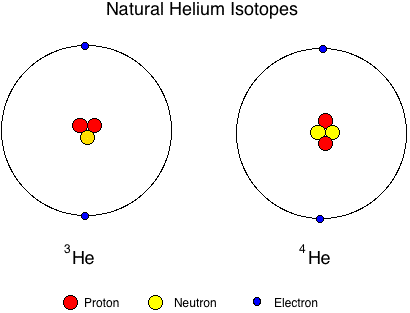
Author : Uwe W., Public domain
The heavier isotope, Helium-4 (4He) happens to be the most naturally abundant Helium isotope while the lighter isotope, Helium-3 (3He) is found experimentally from the radioactive decay of tritium produced in nuclear reactors.
Although both isotopes of helium are regarded as liquid helium so far they are kept at a very low pressure and temperature that is close to absolute zero, it's the 4He that's observed to initially showed the property of superfluidity before 3He later showed the effect at a temperature below that of 4He.
Superfluidity, in the form of zero viscosity through extremely narrow channels first came to place in 1927 but was later discovered in 4He below 2.17 K (− 290.98 °C, or − 455.76 °F) in 1938, by a Nobel laureate and Soviet physicist Pyotr Leonidovich Kapitsa and Canadian physicists John F. Allen and A.D. Misener. The process of changing a liquid helium 4He to the superfluid phase is known as the lambda-transition. The lighter isotope 3He didn't exhibit any property of superfluidity or any contradicting or strange behaviour till a very low temperature of 2.65 K (− 270.5 °C, or − 454.9 °F).
But in the year 1972, some (group) Nobel laureate American physicists by the name of Robert C. Richardson, Douglas D. Osheroff, and David M. Lee found that below the temperature of 2.65K, the liquid 3He has two different anomalous phases I and II (with the phase II ruling the pressure–temperature phase diagram).
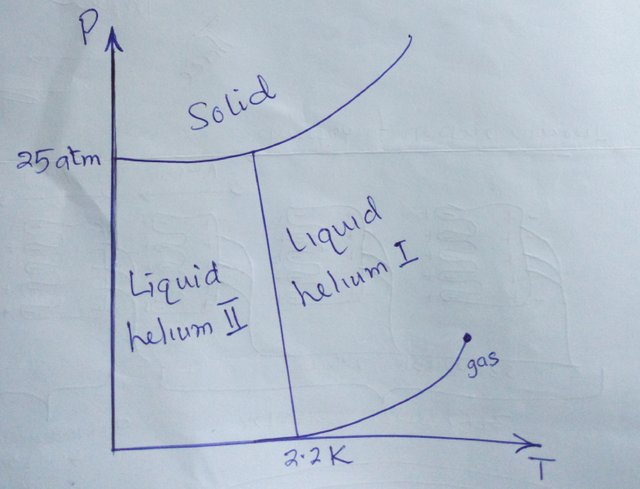
What's so special about Helium?
We might be wondering why it's only helium that can serve as the only fluid with zero viscosity at very low temperatures. The reason isn't far fetched in the sense that helium is the only element that can remain a liquid at very small temperatures because it is only at that stage the quantum effect of its superfluidity can be felt. Among other reasons that makes helium more special than the other elements is the fact that it doesn't solidify when cooled at low temperature and normal pressure while other elements do because the kinetic energy of their atoms turn to be very small at such a low temperature to keep them bounds within their lattice. Helium atoms don't solidify except only under strong pressure. I said earlier that helium is the second lightest element only after hydrogen. However, despite the fact that hydrogen is the lightest, it solidifies under low temperature because it's inter-atomic cohesive forces is much stronger.
Theoretical explanation of Superfluidity
Superfluidity came to being some years after superconductivity. Both terms are similar, in the sense that a superconductor is a material (metal or alloy) that allows the movement of charges without any hindrance (i.e very low resistance) or loss of energy. Furthermore, there're presence of vortices which allow the passage of magnetic field into the superconductor. On the other hand, it is an established fact that for a superfluid, there's a certain critical temperature over which it loses its superconductivity.
Now, in theory, what's the disparity between a superfluid and a superconductor?
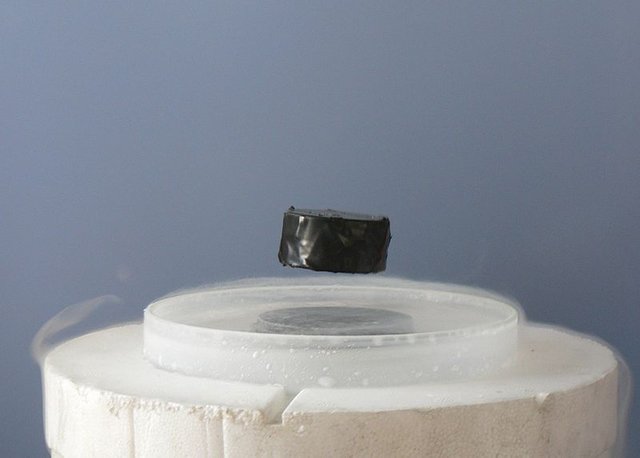
Author: Mai-Linh Doan, CC BY-SA 3.0 Unported
The first difference is in their symmetry. In physics, the symmetry of a system is the mathematical or physical part of that system which is kept constant after undergoing some important changes to its nature.source. There are two broad types of symmetry; the local and the global symmetry. A local symmetry is one with a different symmetry changing at different points of spacetime and is usually described using the spacetime co-ordinates while the global symmetry is one that do not change its form and holds at all points of spacetime.source
Naturally, a local symmetry can be broken by a superconductor while a superfluid only breaks a global symmetry. In theory, this shows how similar a superconductor is to a superfluid, but it also shows their basic difference.
Aside the difference in symmetry, a superconductor is also different to a superfluid in terms of their electrons. In a superconductor, the electrons are fermions in nature while the atoms in a superfluid are bosonic in nature. Bosons are those particles that follow Bose–Einstein statistics. source. So, it is Bose-Einstein condensation (BEC) that leads to the phase transition in a superfluid.
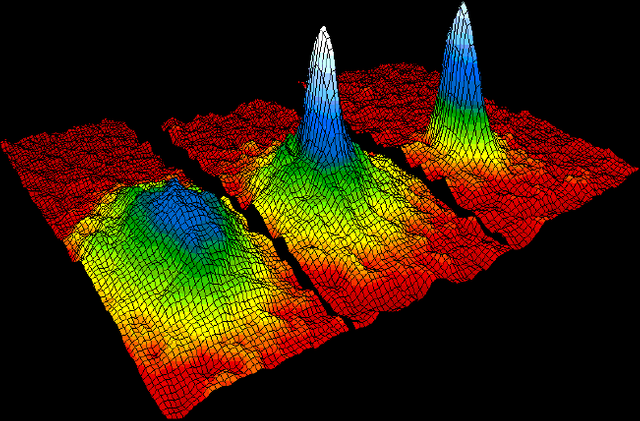
Source: NIST Image, Public domain
Bose-Einstein Condensate (BEC) occurs when a gas is made to be very cold at a temperature close to absolute zero (0 K, or −273 °C, or −459.67 °F). It is a change of state where Superfluidity is usually experienced.source
Liquid light
I can still remember during those days of secondary school when we were being taught state of matter. I remember I was told that matter can only exist in 3 forms; which are the solid, liquid and gas. Not, until I got into the higher institution I later learnt that matter can exist in more than 3 forms. Before we talk further, let's take a lil time to understand what matter is and its state.
In physics, matter is any physical substance that has mass and occupies space.source An example of matter is anything you can see, ranging from the smallest to the biggest. Be it pencil, needle, even we human being, we're all examples of matter so far we have mass and occupy space, no matter how small or big the space is.
Now, the different forms in which matter takes or appear to us is called the state of matter. There are 4 states of matter which are observed in our daily activities and they are the solid, liquid, gas, and plasma. Not until recently, the Bose-Einstein Condensates (BEC) complete the fifth state.
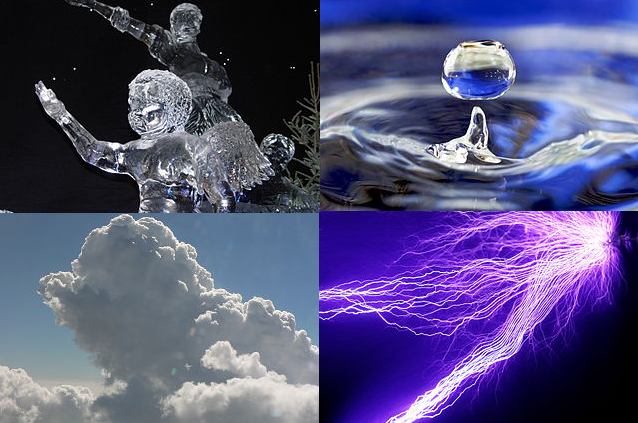
Author:Spirit469, CC BY-SA 3.0 Unported
As result of the giant leap in science and technology, scientists now have different ways of controlling or influencing matter. Mostly, this gives birth to more types of matter with different great qualities, some of which is the metallic hydrogen. Such discoveries usually lead to a wide range of application in physics and electronics.It's from this type of this discoveries, we got to know of liquid light.
Liquid light is a kind of a BEC and is regarded as the fifth state of matter. It has the characteristics of a superfluid. And, Instead of stopping at an obstacles, liquid light allows light to flow around objects and corners.source. It was stumbled across by some researchers from the Institute of Nanotechnology in Italy and the Montréal Polytechnic in Canada. They realized that the strange matter can be formed at room temperature, which will be the first time of such in history.
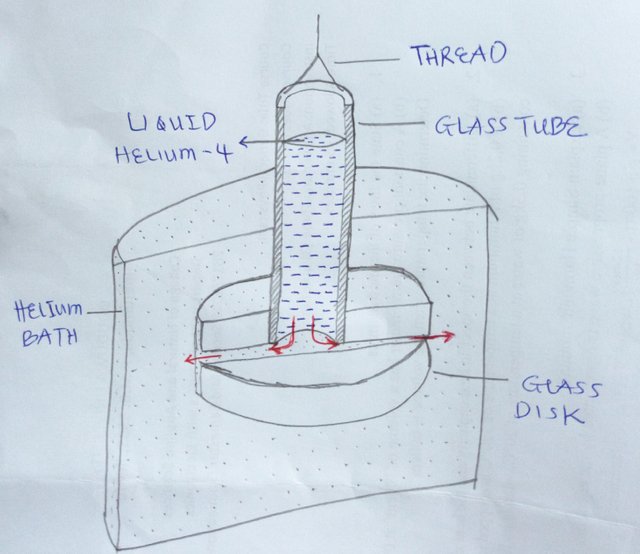
Basically, from the idea of elementary physics, it is well known that light has the ability to travel as photons or particles and as well as waves. Though, it might look difficult or impossible, yet under certain conditions recent findings has made us know that light also has the properties of a liquid.
Like I've explained in the earlier chapters above, Superfluids naturally exist for some few seconds and only in a temperature very close to absolute zero. From the research or these great scientists, it was proved that all these conditions are not always necessary. A liquid light can be formed at room temperature.
How was liquid light formed at room temperature?
I'd like to quote the words of the lead researcher, Daniele Sanvitto in his press release.
“The extraordinary observation in our work is that we have demonstrated that superfluidity can also occur at room-temperature, under ambient conditions, using light-matter particles called polaritons (Frankenstein mash-up)”source
How was this possible?
A liquid light at room temperature was achieved by placing a 130-nanometer-thick film of organic molecules between two reflecting mirrors. Then, the reflectve mirror was now afterwards exposed to a 35 femtosecond laser pulse blast. A hybrid light-matter superfluid was formed and this was as a result of the interaction of the light with the organic molecules.
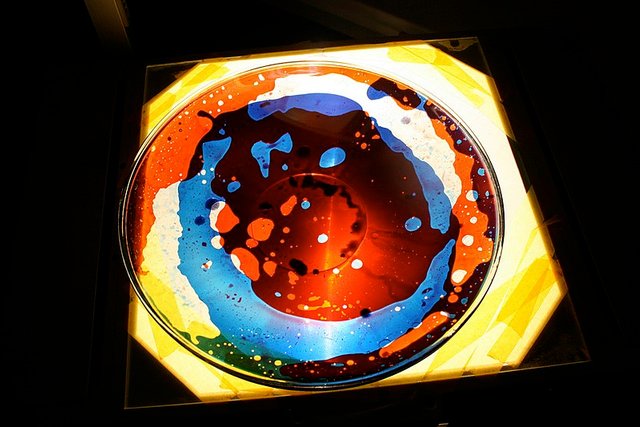
Author: Dominik, CC BY-SA 2.0 Genericlicensed
“Under normal conditions, a fluid oscillates and revolves around anything that disturbs its flow,”
Stéphane Kéna-Cohen, the Canada team coordinator, explained in the press release.
“In a superfluid, this turbulence is suppressed around obstacles, causing the flow to continue on its way unaltered.”source
Applications of liquid light
Naturally, the researchers looked for ways by which this new form of matter can be of a great use.
Firstly, it provides a great platform for the study of quantum hydrodynamics.
It can also broaden the study of room-temperature polariton devices.
It is very useful in the production of super-conductive materials for electronics like LEDs, solar panels, and lasers.
According to what the researcher wrote in the study and I quote,
“The fact that such an effect is observed under ambient conditions can spark an enormous amount of future work."source
The research would also make it easy to study basic phenomena related to Bose-Einstein condensates with table-top experiments, and also for designing future photonic superfluid-based devices where there are no losses and other great phenomena can be exploited"source
Thanks for reading!
References
maglev trains
Scientists create fifth state of matter
Scientists demonstrate liquid light at room temperature
I had to do an article on the BEC and later on the maglev, I wish we could have a maglev train and I wish we have one here. You did a great job of combining these two awesome topics plus some. Bravo.
Downvoting a post can decrease pending rewards and make it less visible. Common reasons:
Submit
I've just gone through the two articles. They are both great read. Sincerely speaking, I also wish we can have maglev trains here but there are a whole lot of things that's needed to be put in place before we can dream of having such.
Thanks, for the compliment. I'm inspired to do more. And also thanks for passing by.
Downvoting a post can decrease pending rewards and make it less visible. Common reasons:
Submit
Thank you too.
Downvoting a post can decrease pending rewards and make it less visible. Common reasons:
Submit
This post has been voted on by the steemstem curation team and voting trail.
There is more to SteemSTEM than just writing posts, check here for some more tips on being a community member. You can also join our discord here to get to know the rest of the community!
Downvoting a post can decrease pending rewards and make it less visible. Common reasons:
Submit
Hi @emperorhassy!
Your post was upvoted by utopian.io in cooperation with steemstem - supporting knowledge, innovation and technological advancement on the Steem Blockchain.
Contribute to Open Source with utopian.io
Learn how to contribute on our website and join the new open source economy.
Want to chat? Join the Utopian Community on Discord https://discord.gg/h52nFrV
Downvoting a post can decrease pending rewards and make it less visible. Common reasons:
Submit
Congratulations! Your post has been selected as a daily Steemit truffle! It is listed on rank 17 of all contributions awarded today. You can find the TOP DAILY TRUFFLE PICKS HERE.
I upvoted your contribution because to my mind your post is at least 23 SBD worth and should receive 226 votes. It's now up to the lovely Steemit community to make this come true.
I am
TrufflePig, an Artificial Intelligence Bot that helps minnows and content curators using Machine Learning. If you are curious how I select content, you can find an explanation here!Have a nice day and sincerely yours,

TrufflePigDownvoting a post can decrease pending rewards and make it less visible. Common reasons:
Submit
This is a job well done @emprorhassy. No wonder it took you several days to get it done.
Your illustration of viscosity is wonderful.
Keep it up.
Downvoting a post can decrease pending rewards and make it less visible. Common reasons:
Submit
Lol... Thanks, @mr-sakariyau.
I really appreciate your comment and passing by.
Downvoting a post can decrease pending rewards and make it less visible. Common reasons:
Submit
Congratulations! This post has been upvoted from the communal account, @minnowsupport, by emperorhassy from the Minnow Support Project. It's a witness project run by aggroed, ausbitbank, teamsteem, theprophet0, someguy123, neoxian, followbtcnews, and netuoso. The goal is to help Steemit grow by supporting Minnows. Please find us at the Peace, Abundance, and Liberty Network (PALnet) Discord Channel. It's a completely public and open space to all members of the Steemit community who voluntarily choose to be there.
If you would like to delegate to the Minnow Support Project you can do so by clicking on the following links: 50SP, 100SP, 250SP, 500SP, 1000SP, 5000SP.
Be sure to leave at least 50SP undelegated on your account.
Downvoting a post can decrease pending rewards and make it less visible. Common reasons:
Submit
Nice one buddy, I can only imagine what technologist could do with this liquid light in the field of imaging especially in looking through barriers.
Downvoting a post can decrease pending rewards and make it less visible. Common reasons:
Submit
I can also imagine a whole lot they would do with it. It's gonna be massive.
Thanks for passing by.
Downvoting a post can decrease pending rewards and make it less visible. Common reasons:
Submit